Alexandros Washburn, a professor, architect, city planner and lately a real estate developer who owns a house on Van Brunt Street, made a name for himself after Hurricane Sandy by attaching himself to the many resiliency groups that sprung up after that disaster.
His latest project is what he is calling a “Model Block.” He and a group of partners have quietly purchased a city block adjacent to the planned UPS distribution center at 145 Wolcott Street. The block is zoned for manufacturing and is in Red Hook’s IBZ zone, a city directive meant to preserve local industry.
What Washburn’s group is proposing is not allowed by current zoning. He is asking to build a 15-story residential tower in the middle of a neighborhood with mostly 5 and 6 story buildings. He is asking to sell or rent 210 apartments of which 61 would be earmarked for affordable housing. Part of the block will also include commercial shops/restaurants and light manufacturing spaces (“maker space” and creative workspaces for artists), art galleries and a 314 parking spaces.
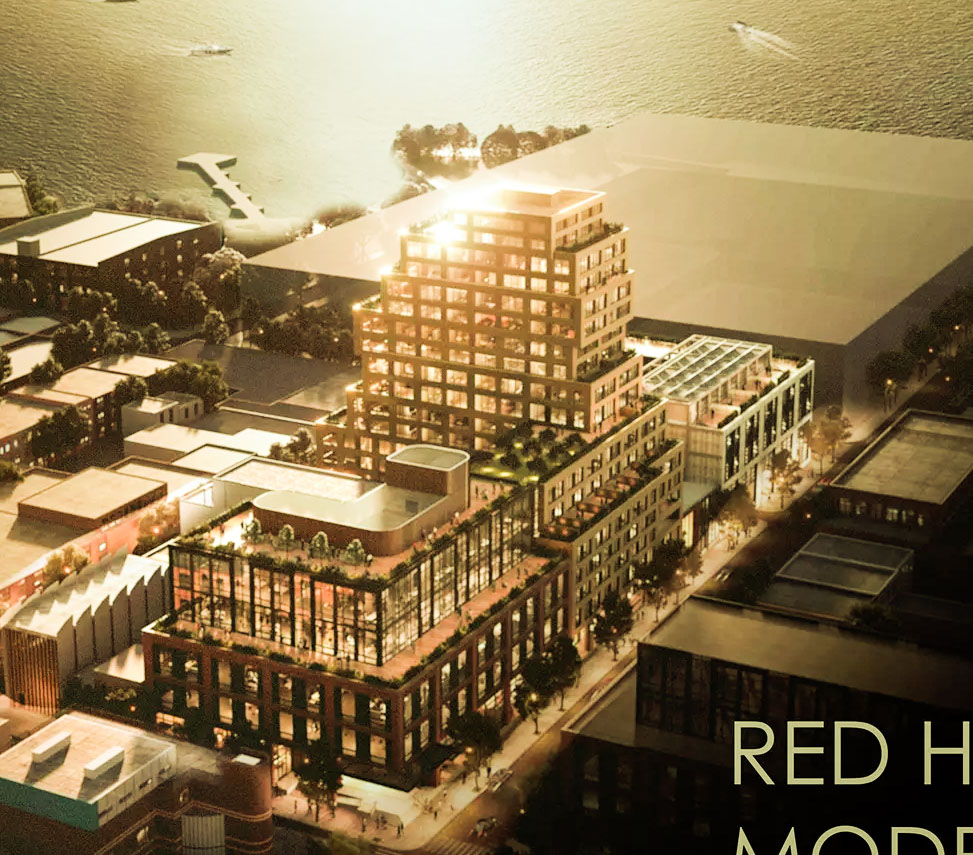
Normally a developer would seek a change in zoning. However, possibly advised by the failure of a nine-story nursing home proposal nearby to pass muster in the City Council back in 2016, Washburn is going a different route – the BSA.
The NYC Board of Standards and Appeals (BSA) describes themselves as: “an integral part of the City’s system for regulating land use, development, and construction and was established as an independent board to grant “relief” from the zoning code.”
Washburn is claiming relief under the zoning provision 72-21, which says that relief from zoning can be granted when there is a “hardship” that prevents a reasonable return from investment.
The hardship claimed is that 150 years of industrial use have greatly polluted the lot. So much so that it will cost them almost $9 million to remediate, according to a report submitted that was prepared by Langan Engineering, a company familiar to some Red Hookers who saw them prepare a similar report for Thor Equities, who is preparing a warehouse for Amazon on the site of the former Revere Factory. Incidentally, the Financial Report submitted was prepared by Capalino, a company that represents the UPS in Red Hook.
In an article printed by the Brooklyn Paper last month, Washburn claims that in community meetings held in his office he “asked our neighbors: what do we need in Red Hook? What do we love about Red Hook? And how can we get it all in a model block? The top priorities that emerged were clear: housing, jobs, resilience and the environment.”
The Star-Revue was unable to verify that these meetings included plans for a 15 story residential tower. Participants did remember some discussions that included five or six story buildings, but not taller.
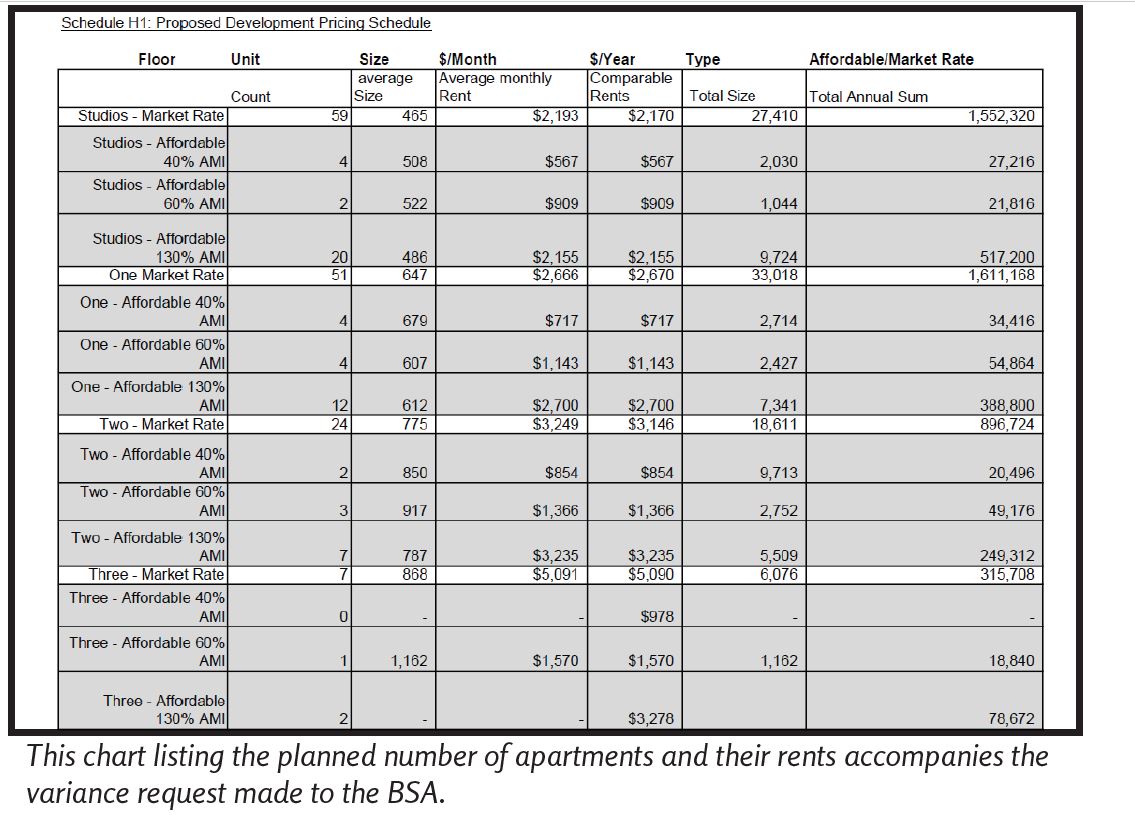
Washburn is also touting the affordable housing portion of the project. He has hired a neighborhood activist to hold workshops at the Red Hook Houses to “invite Red Hook NYCHA residents to learn and earn and apply for a unit as a part of this project,” as was stated on a Red Hook Facebook page last month.
A close look at the proposal reveals that of the 61 affordable units, about 30 are promised to residents who live in the Community Board 6 area, which includes Carroll Gardens, Cobble Hill, Gowanus and Park Slope, in addition to Red Hook. Of those, 20 will be the more expensive kind of affordable housing, meant for a family of three that earns $130,000 or less. According to the above chart, those apartments are not affordable for working class families.
The remaining ten might be affordable to a typical tenant in the Houses, but they will be competing for those apartments with residents of the Gowanus Houses, and other low-income earners. The system for choosing tenants will be by lottery, so nothing is guaranteed.
A final fact to glean about the apartments is that the vast majority of all the affordable units will be on the first seven floors. The upper eight, which feature much desired ocean views, will be mostly market rate.
Washburn’s other claim is that his model block is better than a warehouse. During this second term of the current city councilman, at least four last-mile warehouse projects have landed in Red Hook. As of now, nobody is planning a fifth one in Red Hook.
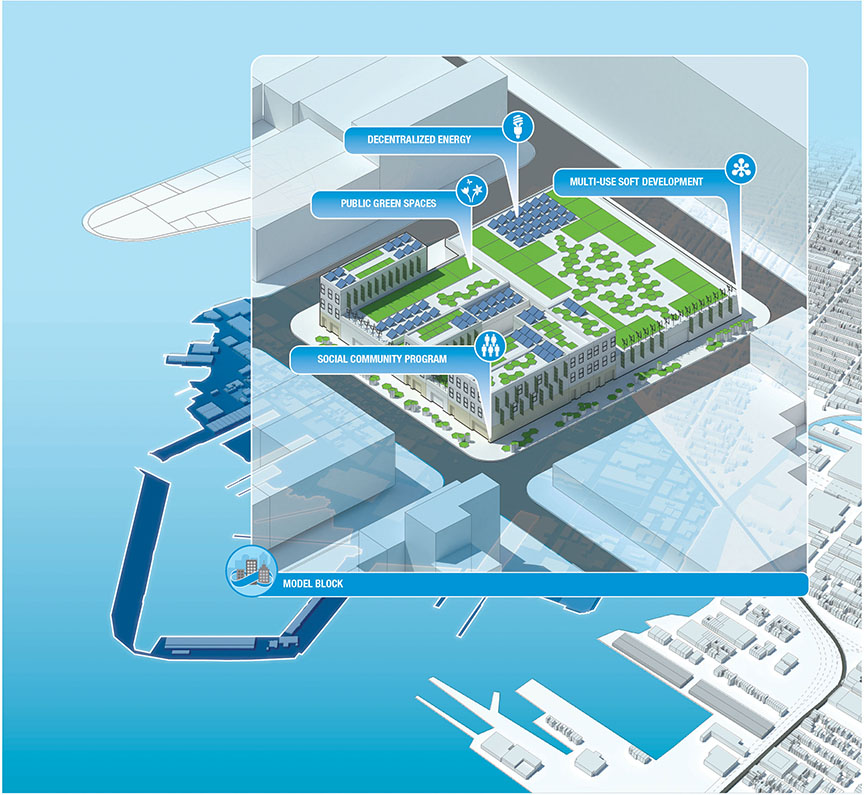
The Community Board and the BSA will hold hearings on whether to approve this plan, which if approved will no doubt become a precedent for future hi-density proposals. Both entities claim that they will be render judgment in part based on community feedback. These hearings will probably occur in the next two months, so now is a good time to let them know what you think.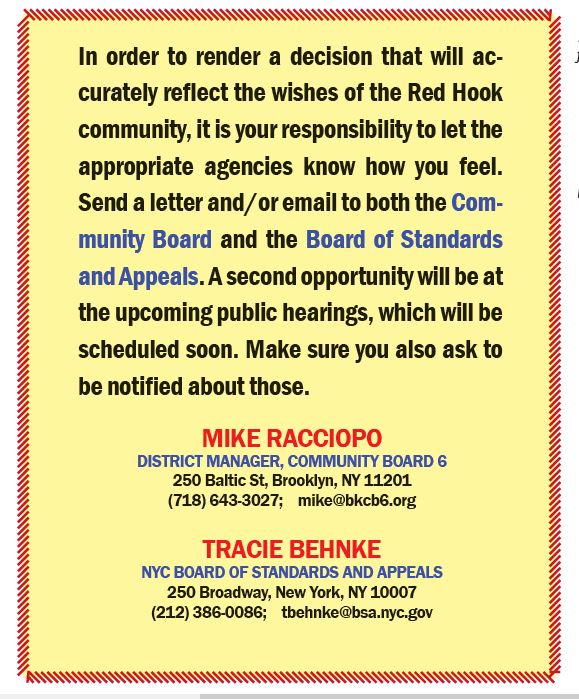
Author
-
Founder and editor of the Red Hook Star-Revue. George is also a musician and one-time progressive rock disk jockey, in York, Pennsylvania, also birthplace of Mrs. Don Imus.
View all posts
Founder and editor of the Red Hook Star-Revue. George is also a musician and one-time progressive rock disk jockey, in York, Pennsylvania, also birthplace of Mrs. Don Imus.

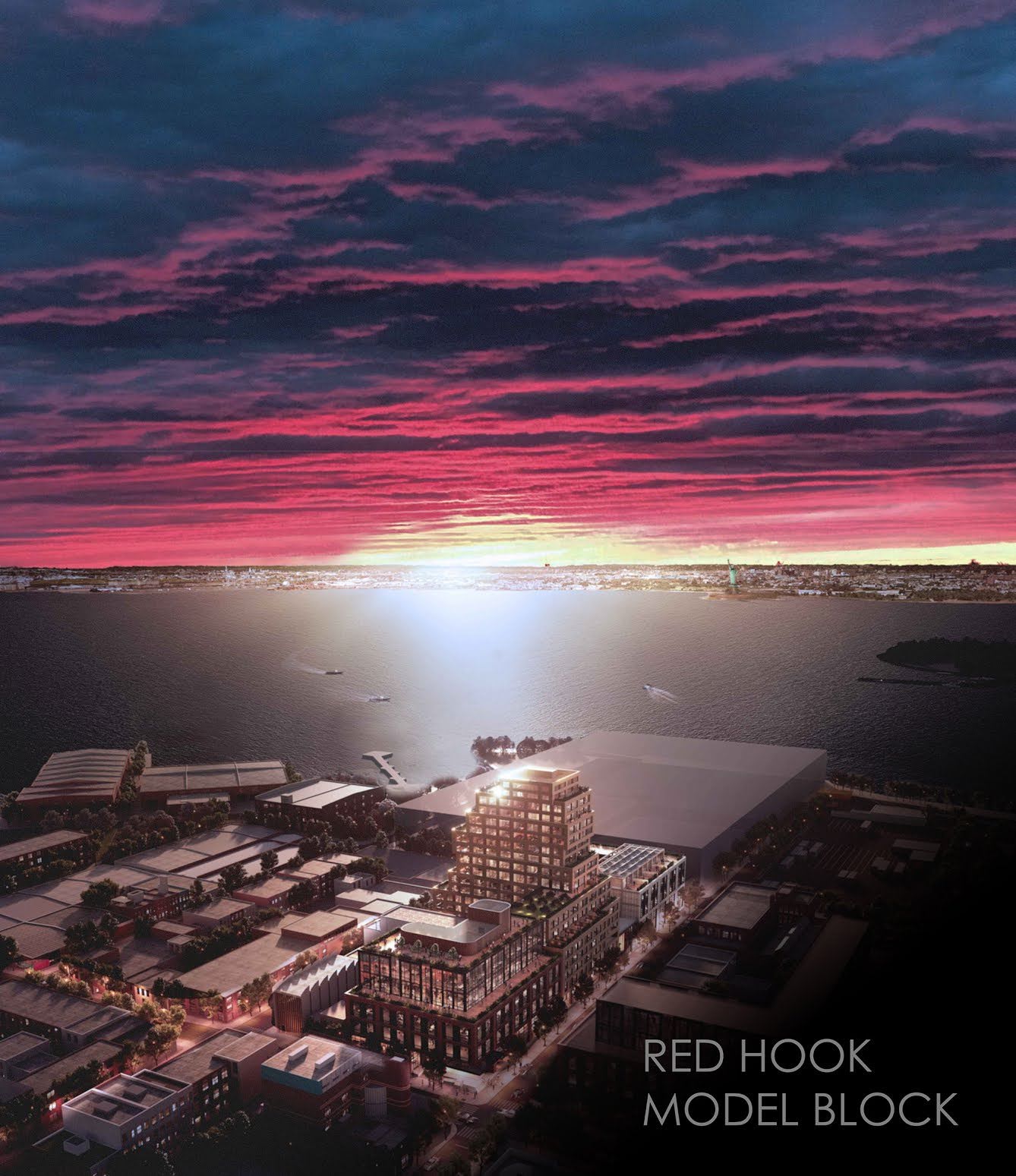








One Comment
Pingback: 15 stories and what do we get By George Fiala – MarkerSpace America